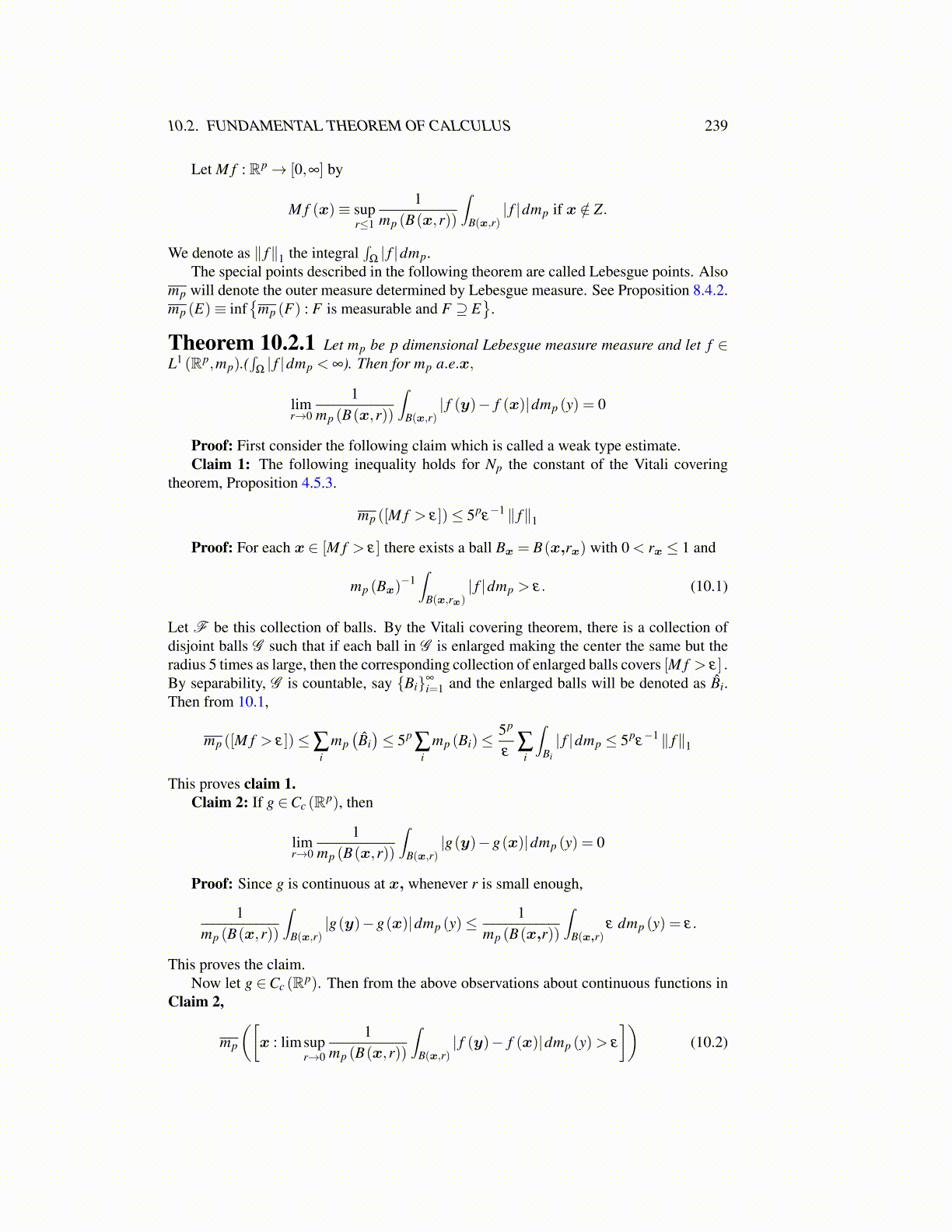
10.2. FUNDAMENTAL THEOREM OF CALCULUS 239
Let M f : Rp→ [0,∞] by
M f (x)≡ supr≤1
1mp (B(x,r))
∫B(x,r)
| f |dmp if x /∈ Z.
We denote as ∥ f∥1 the integral∫
Ω| f |dmp.
The special points described in the following theorem are called Lebesgue points. Alsomp will denote the outer measure determined by Lebesgue measure. See Proposition 8.4.2.mp (E)≡ inf
{mp (F) : F is measurable and F ⊇ E
}.
Theorem 10.2.1 Let mp be p dimensional Lebesgue measure measure and let f ∈L1 (Rp,mp).(
∫Ω| f |dmp < ∞). Then for mp a.e.x,
limr→0
1mp (B(x,r))
∫B(x,r)
| f (y)− f (x)|dmp (y) = 0
Proof: First consider the following claim which is called a weak type estimate.Claim 1: The following inequality holds for Np the constant of the Vitali covering
theorem, Proposition 4.5.3.
mp ([M f > ε])≤ 5pε−1 ∥ f∥1
Proof: For each x ∈ [M f > ε] there exists a ball Bx = B(x,rx) with 0 < rx ≤ 1 and
mp (Bx)−1∫
B(x,rx)| f |dmp > ε. (10.1)
Let F be this collection of balls. By the Vitali covering theorem, there is a collection ofdisjoint balls G such that if each ball in G is enlarged making the center the same but theradius 5 times as large, then the corresponding collection of enlarged balls covers [M f > ε] .By separability, G is countable, say {Bi}∞
i=1 and the enlarged balls will be denoted as B̂i.Then from 10.1,
mp ([M f > ε])≤∑i
mp(B̂i)≤ 5p
∑i
mp (Bi)≤5p
ε∑
i
∫Bi
| f |dmp ≤ 5pε−1 ∥ f∥1
This proves claim 1.Claim 2: If g ∈Cc (Rp), then
limr→0
1mp (B(x,r))
∫B(x,r)
|g(y)−g(x)|dmp (y) = 0
Proof: Since g is continuous at x, whenever r is small enough,
1mp (B(x,r))
∫B(x,r)
|g(y)−g(x)|dmp (y)≤1
mp (B(x,r))
∫B(x,r)
ε dmp (y) = ε.
This proves the claim.Now let g ∈Cc (Rp). Then from the above observations about continuous functions in
Claim 2,
mp
([x : limsup
r→0
1mp (B(x,r))
∫B(x,r)
| f (y)− f (x)|dmp (y)> ε
])(10.2)